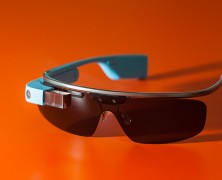Imagine watching video footage of Olympic athletes training, dance rehearsals, skateboarding tricks—all from a first-person point of view. Google Glass teases the possibility of seeing the world through somebody else’s eyes. Last February, Google opened up a competition for the distribution of its new ‘glasses’ called Google Glass Explorer. In order to enter, contestants—who had to be US citizens over 18 and capable of throwing down $1,500 for a Google Glass—entered by tweeting at Google ‘#ifihadglass’ followed by a 50-word or less proposal. Google chose 8,000 winning tweets and began distributing Google Glass prototypes this spring and summer to the new “Glass Explorers.” As Google Glass became a tangible reality, the question of how the new technology would affect journalism became unavoidable. Was this going to be the next new technology to shake the journalism world? Tim Pool, a multimedia journalist who became well known for his live streamed footage of the 2011 Occupy Wall Street protests in New York City, received his Google Glass just days before heading to Turkey to cover the protests there last summer. What was most exciting to Pool about using Glass to film instead of other devices was obvious: Glass is hands free. Glass relies on Bluetooth or an Android to connect to the Internet, so Pool had to find ways to keep his streaming live (he often carries multiple SIMs so he can switch operators when necessary), but that did not detract from his excitement that he could film hands-free. In a Guardian article from July, Pool explains that, “when there’s a wall of police firing plastic bullets at you, and you’re running through a wall of tear-gas, having your hands free to cover your face, while saying ‘OK Glass, record a video’, makes that recording process...


 Jackalope Magazine is the student magazine of Santa Fe University of Art and Design. Building on the interdisciplinary nature of our education, we aim to showcase the talent of our university and character of our city.
Jackalope Magazine is the student magazine of Santa Fe University of Art and Design. Building on the interdisciplinary nature of our education, we aim to showcase the talent of our university and character of our city.
Recent Comments